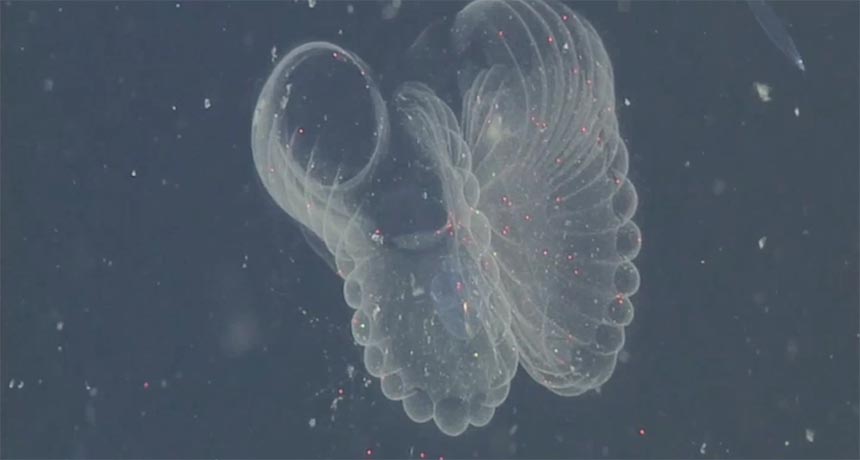Giant larvaceans could be ferrying ocean plastic to the seafloor

Everybody poops, but the poop of bloblike filter feeders called giant larvaceans could be laced with microplastics.
Every day, these gelatinous creatures (Bathochordaeus stygius) build giant disposable mucus mansions to round up zooplankton into their stomachs — sometimes sifting through around 80 liters of seawater per hour. Kakani Katija and her colleagues at the Monterey Bay Aquarium Research Institute now suggest that tiny plastic particles also make their way in — and out — of giant larvaceans’ guts.
Microplastics pervade the ocean. Their combined mass could reach 250 million metric tons by 2025. Scientists don’t know a lot about where microplastics stick around in open water ecosystems.
To see if plastics could end up on the larvacean menu, Katija and colleagues tried feeding the animals brightly colored microplastics. An underwater robot equipped with camera gear helped the researchers monitor plastic intake from above. Some animals did end up scarfing down the particles, and some of those particles ended up in the organism’s waste, which showers down on the seafloor, Katija and colleagues report August 16 in Science Advances.
“Plastics are sometimes seen as a sea surface issue, and more and more we’re seeing that’s not necessarily true,” Katija says.
Just how much plastic ends up passing through giant larvaceans in the wild remains unclear. But the researchers suspect that the creatures’ poop, as well as their mucus houses, could transfer microplastics from the water’s surface to the depths of the sea (along with nutrients such as carbon that cycle through the environment). And that pollution transfer may impact the ecosystems at either end.